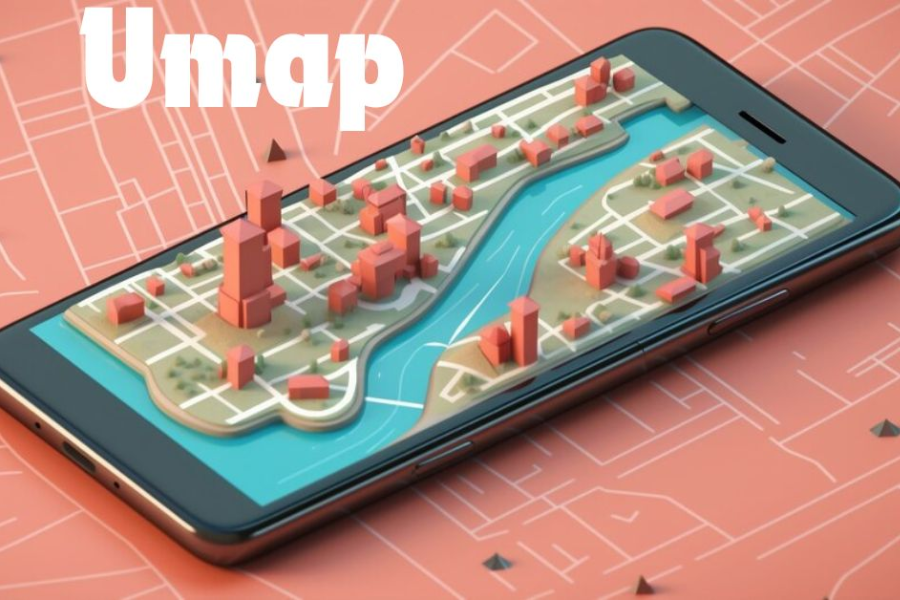In the constantly evolving technological context, mapping technologies has become a transformative benefit that alters our understanding of and capacity for navigating the world around us. It’s incredible how mapping has changed throughout time, going from static paper maps to dynamic digital platforms. Ùmap is one of the various mapping tools that are currently available that is especially helpful and adaptable.
Evolution of Mapping: From Paper to Digital
The days of unfolding paper maps and plotting a course are long gone. Digital mapping technologies have completely changed the way we navigate. Our relationship with maps has changed dramatically as a result of real-time updates, dynamic features, and worldwide satellite data. With a few clicks nowadays, we may explore 3D models and street views, improving our spatial awareness and dispelling our dread of being lost.
Digital maps have also created new opportunities for data visualization and geographical study. These technologies are extremely versatile and are highly valuable in many domains, ranging from emergency response to urban planning. We may anticipate even more ground-breaking developments in mapping as technology develops further, which will change how we interact with geographical data.
The Rise of Versatile Mapping Technologies
In the digital age, mapping technologies have advanced dramatically, going from static paper maps to dynamic, interactive web platforms. The way we perceive and evaluate geographic data has changed dramatically because to tools like Geographic Information Systems (GIS), virtual reality maps, and interactive internet maps.
By allowing users to superimpose several data sets, GIS makes patterns and trends visible that might not be seen on traditional maps. Our comprehension of complex data is improved by the immersive experiences that VR and AR maps offer. Users may quickly build, modify, and share maps using interactive web maps, which promotes cooperation and real-time data exchange.
Types of Ùmap
Ùmap encompasses various types, each serving different purposes and industries:
- Users of geographic information systems (GIS) can examine, visualize, and interpret data related to geography. It is extensively utilized in emergency response, environmental management, and urban planning.
- Maps of virtual and augmented reality: By superimposing digital data over actual locations, these maps offer immersive experiences. They are used in navigation, gambling, tourism, and education.
- Interactive Web Maps: These maps let users alter and share them online while interacting with geographical data. They are useful resources for disaster response, logistical optimization, and urban planning.
Advantages of Using Ùmap
Ùmap offers several advantages across various industries:
- Dynamic Information: Real-time updates and dynamic elements provide users with up-to-date information for better decision-making.
- Customization: By adding interactive elements and changing layers, users can create and alter maps to suit their own needs.
- Collaboration: Teams may work together in real time using collaborative capabilities, which enhances productivity and communication.
- Valuable Data Visualization: Maps offer concise, pictorial depictions of intricate data, augmenting comprehension and examination.
Applications in Various Industries
Flexible mapping technologies have transformed several industries, including:
- Urban planning: Traffic flow analysis, project planning, and city layout visualization are all made easier with the use of mapping tools.
- Healthcare: GIS is used to better coordinate the location of healthcare facilities, track disease outbreaks, and accelerate emergency response times.
- Retail: Companies evaluate consumer trends, choose the best sites for their stores, and draw in target audiences by using mapping technologies.
- Agriculture: Farmers can increase crop yields and resource allocation by using precision farming practices made possible by mapping technology.
Challenges and Limitations
Despite their benefits, mapping technologies face challenges such as:
- Learning Curve: Complex GIS software and VR map interfaces can be daunting for new users, limiting their adoption.
- Data Accuracy: Inaccurate mapping data, often due to outdated information or incorrect data entry, can impact decision-making in critical fields.
- Privacy Concerns: The collection and sharing of sensitive geographical information raise ethical and privacy concerns.
Future Developments and Innovations
Mapping technology seems to have a bright future thanks to AI, machine learning, and real-time data updates. Further altering planning will be improved geospatial perception instruments, further developed 3D planning innovation, and incorporation with IoT gadgets. These developments will be beneficial to resource optimization, disaster relief, and urban planning.
Conclusion
To sum up, Ùmap is a mapping technology leader that provides a strong and adaptable tool for geographic analysis, data visualization, and navigation. Its influence is felt in many other businesses, giving people the ability to easily navigate the digital world and make well-informed decisions. Ùmap will be crucial in determining how mapping develops in the future as technology advances.
FAQs
What Does Ùmap Stand For?
The name Ùmap is derived from the word “map,” signifying its primary purpose as a platform for dynamic mapping.
What Can Users Do With Ùmap?
Users can create, customize, and share maps for navigation, data visualization, and geographical analysis.
How Is Ùmap Revolutionizing The Digital Age?
Ùmap is revolutionizing the digital age by offering a flexible and effective tool for navigation and data display.
Is Ùmap Easy Enough for Average Users to Navigate?
Yes, Ùmap provides beginners’ guides and tools to help users navigate the platform successfully.
Can Ùmap Work With Other Applications?
Yes, Ùmap can often be integrated with other business or analytics software, enhancing its functionality and versatility.
Explore the forefront of innovation and technology at WadWare.org.
